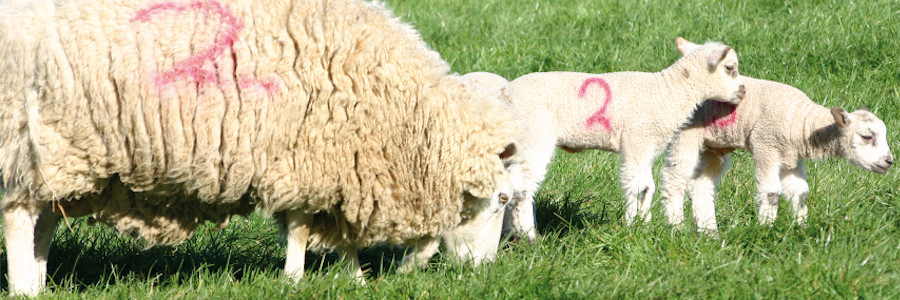4 Things to Consider When Preparing for Lambing
We understand how good preparation will help you to maximise the number of healthy newborn lambs to finish the season, but as a reminder here are some top tips for preparing for lambing.
1. Disease prevention
Give lambs a better chance of survival by vaccinating ewes against clostridial diseases. Don’t forget the booster 4-6 weeks pre-lambing.
2. Lameness
Using injectable antibiotics to treat footrot and using a vaccine pre-housing allows you to take a comprehensive approach to reduce lameness. Footrot bacteria can spread when ewes are housed, it is therefore recommended to reduce foot-rot to a very low level before housing. It is also advisable to avoid routine trimming. A lame ewe cannot graze or eat adequately to maintain body condition, which in turn can have a significant knock-on effect on lamb birth weight and milk production.
3. Body Condition
Achieving the correct body condition for a ewe can be achieved by feeding specifically formulated rations to match the ewes requirements. To ensure you are able to do this conduct assessment on forage quality: This can be done by taking representative samples of hay or silage from 4 or 5 bales in each stack or 3 cores from a clamp and send them for analysis.
Ideal condition score for lambing:
Lowland ewe - 2.5 to 3
Hill ewe - 2.0 to 2.5
4. Nutrition
A good quality forage analysing 11.5-12MJ/kg DM and above is capable of supplying a large proportion of nutrients needed by a ewe until the last 2 weeks prior to lambing. Poor quality forage, less than 10.5MJ/kg DM, will need supplementing with concentrates much earlier. If you have different qualities of forage available, it is suggested to save the best quality for close to lambing to help cut down on bought-in concentrates.
Check trace elements: Selenium and iodine are important in mobilising brown fat in the new-born lamb, it is therefore essential to ensure the ewes’ diet is adequate in trace elements. Lambs born to well-fed ewes are generally born with a good supply of brown adipose tissue, their instant energy source for the first few hours of life. Low brown fat reserves can then increase the risk of hypothermia.
Formulate the diet: To lay the foundations for successful lambing use high-quality forage and balanced supplements such as cereals and soya bean meal, or a good quality compound feed. Obtaining optimum ewe body condition combined with a diet that meets the ewes’ needs for energy and protein will lead to good sized lambs, plentiful supplies of high-quality colostrum and a good milk yield.
All these factors have a huge influence on lamb viability and health.
Overfeeding an over fatness, though a diet that exceeds the ewes requirements, can lead to large lambs, difficult births and higher mortality. This is particularly critical for single bearing ewes.
Top Tip: Seek the advice experienced sheep nutritionist to help you formulate the best diet for your ewes needs. They will offer advice on how to make the best use of homegrown feeds and help you avoid buying concentrates that aren’t’ required.
Source: LamLac
When you can take every opportunity to place your hand on each ewe’s back and condition score. These scores will allow sufficient body reserves to draw on in early lactation. It’s recommended for ewes to reach these condition scores 8 weeks prior to lambing and to then maintain it right through to lambing, rather than try to gain or lose ewe condition in the last few weeks. Ewes that are carrying excessive fat are at a high risk of prolapse and ewes that are underweight are unlikely to have good sized lambs and produce enough milk.
Suggested allowance per ewe over a typical winter:
Hay - 100kg to 150kg
Silage - 300kg to 500kg depending on DM











